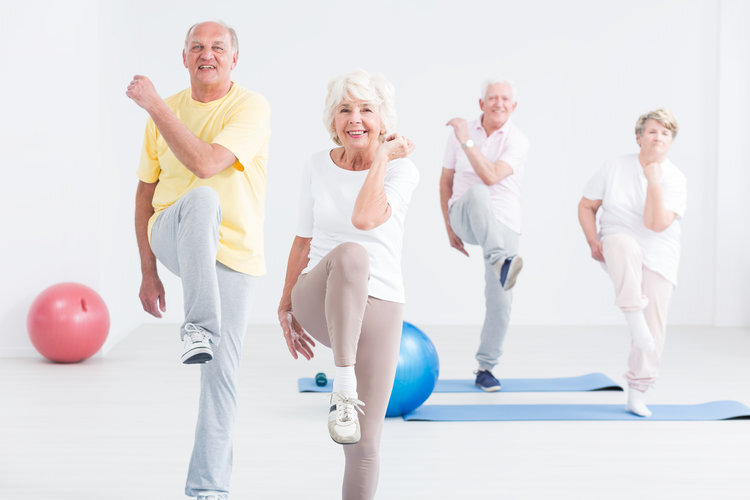
You have a lot of options when it comes to the best exercises for older Americans. And that’s great because it’s important to do a variety of activities. Not only does it help keep different parts of your body healthy, but it also helps keep your workouts interesting and fun.
Balance Exercises
These exercises help with fall prevention because they help you improve your ability to control your body. They can also help build your lower body strength, which is important for maintaining and improving your stability. When you do any balance exercises, be sure to have a sturdy chair or surface nearby so that you have something to hold on to if you become unsteady. Also, do a combination of exercises for both standing and moving balance.
Standing on One Foot
- Stand behind a sturdy chair and place your hands on it for balance.
- Lift one leg up so that your foot is off the floor.
- Hold that position for 10 seconds (or less if you can’t hold it for that long).
- Repeat that motion 10 to 15 times and then switch to your other leg and do the same thing.
- Try to repeat the whole routine two or three more times.
Walking Heel to Toe
- To help you maintain balance during this exercise, place your arms straight out from your sides. You can also do this exercise in a hallway or near a wall.
- Start by placing the heel of your one foot directly in front of the toes of your other foot.
- Focus your eyes on a spot in front of you to help you maintain your balance.
- Step forward with your back foot and place your heel directly in front of your toes on your other foot.
- Repeat until you have taken 20 steps.
Knee Marching
- Place a sturdy chair in front of you so that you can use it for support if needed.
- Place your arms at your sides and stand with your feet shoulder width apart.
- Raise one knee up as high as you comfortably can.
- Lower it and then raise your knee on the other side in the same way.
- Repeat the above steps up to 20 times.
Endurance Exercises
Endurance exercises increase your breathing and heart rate and help you maintain and improve your strength, mobility, stability, and balance. They also help you burn fat and improve your energy levels. All of that can make you feel better, stay healthier, and manage everyday activities more easily.
Try to complete endurance exercises at least three days a week. Start by participating in an endurance activity or exercise for 10 minutes at a time. Then, try to eventually work up to 30 minutes. Warm up and cool down after your endurance training by stretching or walking lightly to prevent muscle strains and injuries. Also, make sure to drink lots of water, dress appropriately, and wear proper shoes.
If you get dizzy or so winded that you’re not able to talk, then take a break and reduce your intensity level. You can also get a heart rate monitor to ensure that you’re not working out too hard. Remember, before starting any exercise program, check with your doctor, especially if you’re concerned about exercising with certain conditions or diseases, such as heart disease or diabetes.
There are many ways to endurance train. Here are some examples:
- Indoors: Use an elliptical machine or treadmill at home or in the gym or attend dance or aquafit classes.
- Outdoors: Go for a brisk walk or jog, ride a bike, or go skating.
Household activities like gardening, shoveling snow, and raking leaves can also count as endurance activities as long as your breathing and heart rate increases and you do the activity for at least 10 minutes. Any activities that meet those criteria are considered endurance exercises.
This article was provided by GreatSeniorLiving.com.
Related Articles & Free Vermont Maturity Subscription

Curious About CBD? Here’s What it Can and Cannot Do for You
The Most Common In-Home Injuries for Seniors and How to Prevent Them






Comment here